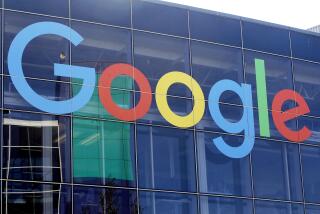Microsoft’s Moment to ‘Open’ Windows?
- Share via
As far as “Billionaire Bill” Gates is concerned, his Microsoft has finally popped the painful pimple of antitrust litigation. “It’s over,” he told one newspaper. “None of the people who run (Microsoft’s seven) divisions are going to change what they do or think or forecast. Nothing. Nothing. There’s one guy in charge of licenses. He’ll read the agreements.”
Needless to say, the trustbusters over at the Justice Department and the European Union beg to differ.
But for all the political posturing and Microsoft machismo surrounding this consent decree, the crucial issue here was not just the proposed breakup, restructuring or per-processor punishment of the world’s most successful software company.
The real issue is: What does this clash say about the future of software development and pricing? Is it in Microsoft’s best interests to proceed as if all of its legal and political obstacles have, in effect, been vanquished? Or could the company exercise creative options that might let it neutralize further antitrust intervention even as it expands its market influence?
Few Microsoft competitors believe that Bill Gates is anything but a ruthless pragmatist who is even more concerned about Microsoft’s market share than its margins. Remember, Gates became a billionaire not by charging premium prices for his wares but by continually cutting them.
“Bill will do whatever is necessary to achieve world domination,” says Adobe Systems vice president Deb Triant, tongue barely in cheek. “For Microsoft, market share is everything. Market share in the operating system is what drives their clout on the other (applications software) side of the business.”
Indeed, Microsoft’s popular Windows operating system--the software that coordinates and controls the internal workings of a personal computer--has rapidly evolved into a de facto global industry standard. You can buy Windows software today for less than $60. The overwhelming majority of entrepreneurs and enterprises developing applications software for PCs now write their software to conform to Microsoft Windows.
Numerous companies complain that Microsoft enjoys an unfair competitive advantage because Microsoft applications development people might have access to operating systems information that outsiders do not. That’s one of the reasons why the trustbusters focused on Windows as a key indicator of Microsoft’s alleged monopolistic practices (though this was not part of the consent decree).
But Microsoft is now in a unique position to call everybody’s bluff about the way it manages Windows. The company has a new, more powerful operating system called Chicago coming out early next year. In the wake of the consent decree, now is an excellent time for Microsoft to “open up” its Windows operating system and put it into the public domain.
In the same way IBM created the “open architecture” personal computer, Microsoft should turn Windows into an open-architecture operating system. Over the next year or so, it should publish the source code (the system’s blueprint) and specifications and license them--for a fee--to software developers. Manage Windows as a standard, not just as a product, and it’s entirely possible Microsoft becomes even more influential and Bill Gates becomes even richer.
“I think it would make a lot of sense for them to publish (Windows specs) and make their operating system more open,” acknowledges Adobe’s Triant. “Our developers would be ecstatic if Microsoft opened up its source code. They could accelerate applications development and come up with much richer functionality.”
Sources at Microsoft say the idea has indeed been kicked around.
Of course, an open-architecture Windows could be sold more cheaply, though a company like Microsoft--with a brand-name reputation for excellence and support--could probably continue to command a premium price.
“That’s the reason people follow Microsoft--they continue to deliver value for the price,” says Michael Tiemann, president of Cygnus Support, a small Mountain View, Calif., software company that derives most of its revenue from servicing the software it in effect gives away. Tiemann argues that pushing Windows into the quasi-public domain would create a rich installed base from which Microsoft could reap service revenue.
“Microsoft has already made their money back on Windows and they’re going to make their money on the next-generation operating system,” contends Esther Dyson of EDventure Holdings, who has tracked Microsoft for more than a decade. “So it’s an interesting option, but I don’t think it’s in character for the company.”
Moreover, Dyson points out, Microsoft competitors such as Novell would claim that a cheap, open-architecture Windows would qualify as “predatory pricing’ and would undermine efforts to launch rival operating systems. “I don’t think Novell would take it kindly,” she says. “They’d call in the Justice Department to investigate.”
That’s the paradox, Dyson says: Making Windows a more open system may be seen as anti-competitive, even though it would give more developers and consumers more choices at lower prices.
But isn’t giving consumers standards that promote more choice at lower prices a goal of public policy?
Bill Gates is simply wrong if he believes that consent decree means he should go back to business as usual. He has a provocative opportunity to rewrite the rules of the software game yet again by putting his company’s flagship product into the public domain--and making money and market share from it.
Let’s see the Justice Department explain how that is not in the public interest.






